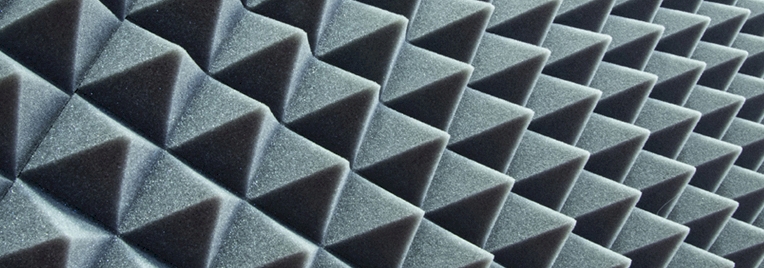
Find out more
Sound-technical evaluation
In 2003 a group of experts of the Federal Institute for Occupational Safety and Health (BAuA) published a list with three indicators which can be used for a rough evaluation of the acoustic quality of office workplaces.
- Criterion 1: A single, identifiable sound source created proportional sound level should not exceed more than 4 dB compared to the sound level of any other sound source altogether. Otherwise the workstation has to be classified as “inconvenient” in terms of sound-technical evaluation.
- Criterion 2: Conversations out of other work areas and from the outside should not be hearable. That implies, that in small offices the proportional level of intruding noises from the outside should be at least 5 dB below the existing basic sound level, in large capacity offices at least 3 dB.
- Criterion 3: If the concerned person does not work, the combined sound level from all sources should be as low as possible. The result of this evaluation can be seen in the following table.
| Level range (Rating level at the workplace) | Sound workplace qualification |
|---|---|
| bis 30 dB(A) | optimal |
| über 30 dB(A) bis 40 dB(A) | very good |
| über 40 dB(A) bis 45 dB(A) | good |
| über 45 dB(A) bis 50 dB(A) | acceptable in a commercial environment |
| über 50 dB(A) bis 55 dB(A) | unfavourable, but still permissible |
| über 55 dB(A) | noise pollution too high |
These three criteria are applicable to all VDU-workstations in offices. They apply to large capacity offices or single offices as well as to combined offices. If criteria 1 to 3 lead to a different evaluation, then the more inconvenient is applicable to evaluate the workstation.
Source: Investigation and reduction of noise at VDU-workstations in the office and in production, work task scientifical findings nr. 124 VDU-work – noise reduction in large capacity offices; Editor: Federal Institute for Occupational Safety and Health (BAuA), Dortmund 2003

The limit value of 55 dB(A) has in the meantime also been included in the German Technical Regulation on Workplaces ASR A3.7 Noise. It goes on to say: "Workplaces without exposure to background speech should be provided for activities in which predominantly speech-dependent cognitive tasks are to be solved (e.g. correction and evaluation of examination results, translations, writing and editing of texts and documents, advice on complex products and services in call centres or consultancy offices). The introduction of background noise as a masker for background speech shall be avoided." This clarifies that in order to achieve criteria 1 and 2, the sound input from the respective disturbing sound sources must be reduced. Relying instead on an increase in the general background noise in the room is only permissible in exceptional cases.

